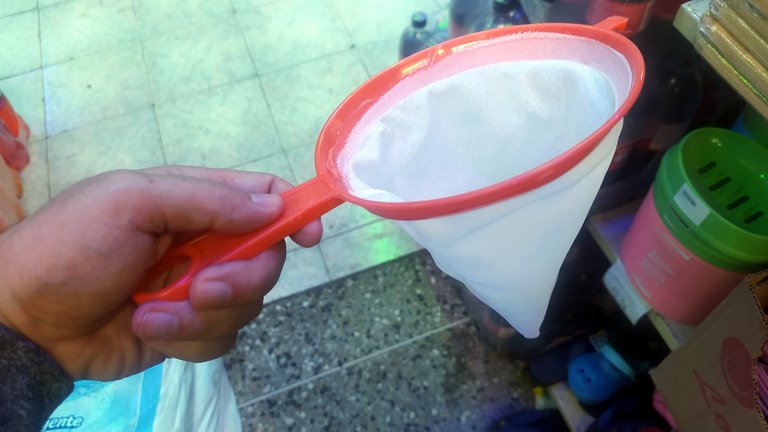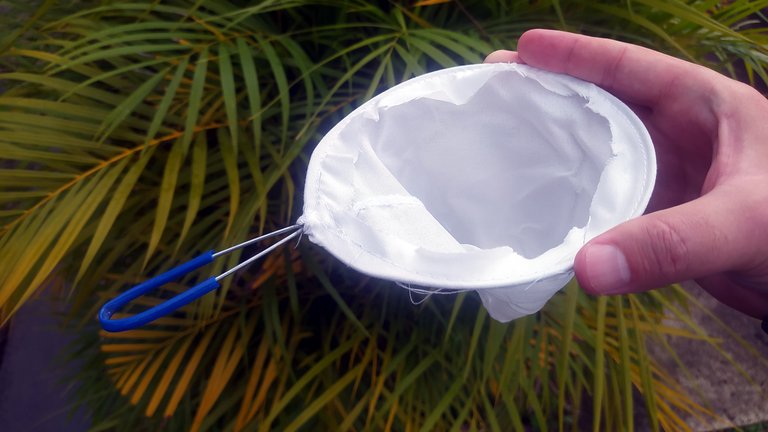Did you see the colours of the coffee strainers on the cover? The difference is abysmal! Now then, why did I decide to change my coffee strainer and how often should we replace it? Please stick around for the answers.

The cloth strainer is perhaps the most popular and widely used brewing method worldwide for the preparation of delicious coffee. By watching several videos on YouTube and personally asking people who supposedly know about coffee brewing, I learned that it is not the coffee itself, but the oil in the coffee that gradually turns the strainer black. And the darker it looks, the more oil it has adhered to the fabric. So, just like a frying pan that gets a thick layer of grease as we use it for frying, the quality of the coffee can be affected by that oil sticking to the strainer. Is it true? Well, I like to think so. So I accepted it as true and when I saw my strainer, I decided to change as soon as possible. So I took an afternoon to walk around a few shops, but it turned out to be a bit... ...fun. I'll tell you about it.
It was to be expected that I would get some simple strainers, made of plastic, and I did. Their diameter was acceptable and they came in many colours. But I also got some that were made of metal, with a slight plastic coating on the handle, supposedly because of how hot it can get. I prefer the metal one, because I feel that in one careless step I could melt the plastic and cause an accident. Also, it could cause the fabric to peel away from the plastic.
 |  |
I could also see that the type of cloth varies quite a bit. Some strainers had a very soft, cotton-like fabric. I suppose that would slow down the process, allowing the water to stay in contact with the coffee longer. However, other strainers had a more synthetic fabric with larger holes. I think it might have the opposite effect to the previous one.
 |  |
But now I will show you some crazy things that I think should not happen in these purchases. All of a sudden you can pick up a colander and say: ‘What a nice fabric, I like the design, the colour is good and... wait, is it broken at the tip? Wait, is it broken at the end? Oh no, then what's going to get through?’

In another shop I also noticed this: you can sort strainers also by their diameter. Interesting. I think it sounds more sophisticated to say: ‘I want to take a 12 centimetre strainer. That's the size I was looking for!’ But did you look closely? I think the smallest one is the most expensive? Strange, isn't it?

In the end, I went back to one of the first establishments I visited and bought this colander, made of metal, of a fabric that was not so porous and not so synthetic. With a blue detail on the handle because it's my favourite colour.

So after a few days I wanted to document my first coffee brewing with it. I learned that before each use I should add hot water to the strainer.

So I added some coffee in the strainer, and I was surprised that it was pretty much sunk in eh? It looks like I hadn't added the amount I measured, but much less, because of how deep and narrow the tip looks. I don't know if that's good or bad for the process. But hey, that's the way it is. So I added the hot water.

And obviously, I have my coffee for the day. The strainer did its job perfectly. But a few minutes after I used it, I proceeded to clean it with plenty of water and at the end I added hot water. That's what they suggest the most in these cases. I don't know how many days I will be motivated to do this at the end of each use. We'll see.

I have a new coffee strainer! But from now on I'm going to try to replace them before they get too stained. Plus, it's kind of inexpensive. I spent $0.70. Now I'll be watching for the difference in cleaner taste this new purchase will make. How often do you replace your cloth strainer?



¿Vieron los colores de los coladores de café de la portada? ¡La diferencia es abismal! Ahora bien, ¿por qué decidí cambiar mi colador de café y cada cuanto tiempo debemos reemplazarlo? Por favor, quédate para conocer las respuestas?
´

El colador de tela es el método de colado que tal vez sea más popular y usado a nivel mundial para la preparación del delicioso café. Viendo varios videos en YouTube y preguntando personalmente a personas que supuestamente saben sobre la preparación de café aprendí de que lo que va pintando de negro poco a poco al colador no es el café en sí, sino el aceite del café. Y que mientras más oscuro se ve, más aceite tiene adherido a la tela. Entonces, tal como un sartén que se le va haciendo una capa gruesa de grasa a medida que lo usamos para freír, la calidad del café puede ser afectada por ese aceite pegado al colador. ¿Será verdad? Pues, a mi me gusta pensar que sí. Por eso lo acepté como cierto y al ver mi colador, decidí cambiar lo más pronto. Así que tomé una tarde para caminar unos pocos negocios, pero resultó ser algo... ...divertido. Te lo cuento.
Era de esperarse de que consiguiera algunos coladores sencillos, cuya fabricación fuera plástico, y así fue. Su diámetro era aceptable y habían de muchos colores. Pero también conseguí unos que eran de metal, con una leve cobertura de plástico en el mango supuestamente por lo caliente que puede llegar a estar. Yo prefiero el de metal, porque siento que en un descuido puedo derretir el plástico y causar un accidente. Además, podría hacer que se despegue la tela del plástico.
 |  |
También pude ver que el tipo de tela varía bastante. Algunos coladores tenían una tela muy suave, parecida al algodón. Supongo que eso haría de que el proceso sea más lento, dejando que el agua esté en contacto con el café por más tiempo. Sin embargo, otros coladores tenían una tela más sintética y con hoyos más grandes. Creo que podría tener un efecto contrario al anterior.
 |  |
Pero ahora le mostraré unas cosas locas que creo que no deberían pasar en éstas compras. De pronto puedes tomar un colador y decir: "Qué buena tela, me gusta el diseño, está bien el color y... espera. ¿Está roto en la punta? ¡Oh no! ¿Entonces qué va a colar?"

En otra tienda también me percaté de esto: se pueden clasificar los coladores también por su diámetro. Interesante. Creo que suena más sofisticado decir: "Quiero llevarme un colador de 12 centímetros. ¡Es la medida que estaba buscando!" Pero, ¿miraste bien? Creo que el más pequeño es el más caro... Extraño ¿no?

A fin de cuenta, volvía a uno de los primeros establecimientos que visité y compré éste colador, de metal, de una tela que no era tan porosa ni tan sintética. Con un detalle en azul en el mango porque es mi color favorito.

Así que al cabo de unos pocos días quise documentar mi primera preparación de café con él. He aprendido que antes de cada uso debo agregar agua caliente al colador.

Entonces agregué un poco de café en el colador, y me sorprendió que quedó bastante hundido ¿eh? Parece que no le hubiese agregado la cantidad que medí, sino mucho menos, por lo hondo y estrecho que parece la punta. No sé si eso sea bueno o malo para el proceso. Pero bueno, eso es lo que hay. Así que agregué el agua caliente.

Y obviamente, ya tengo mi cafecito para el día. El colador hizo su trabajo perfecto. Pero a los pocos minutos que lo usé procedí a limpiarlo con abundante agua y al final le agregué agua caliente. Es lo que más sugieren en éstos casos. No sé cuántos días esté motivado a hacer esto al final de cada uso. Ya veremos.

¡Tengo colador de café nuevo! Pero de ahora en adelante voy a intentar reemplazarlos antes de que se manchen mucho. Además, es algo económico. Yo gasté $0.70. Ahora estaré atento a la diferencia en el sabor más limpio que aportará ésta nueva adquisición. ¿Y tú? ¿Cada cuánto tiempo reemplazas tu colador de tela?

☕️

FUENTES / SOURCES
Cover: Made with the free version of CANVAS || Portada: Hecho con la versión gratuita de CANVAS
Images: Shot with my Xiaomi Redmi Note 8 phone and edited with GIMP || Imágenes: Realizadas con mi teléfono Xiaomi Redmi Note 8 y editadas con GIMP
GIF: I used images captured with my Xiaomi Redmi Note 8 phone and transformed for free in ezgif.com || GIF: usé imágenes capturadas con mi teléfono Xiaomi Redmi Note 8 y transformadas gratuitamente en ezgif.com
Banner: Made by me in GIMP with my own images and free resources from the site pfpmaker.com || Banner: Hecho por mi en GIMP con imágenes propias y recursos gratuitos del sitio pfpmaker.com
Language: Post written in Spanish and then translated into English through DeepL || Idioma: Post redactado en español y luego traducido al inglés mediante DeepL
Posted Using InLeo Alpha





